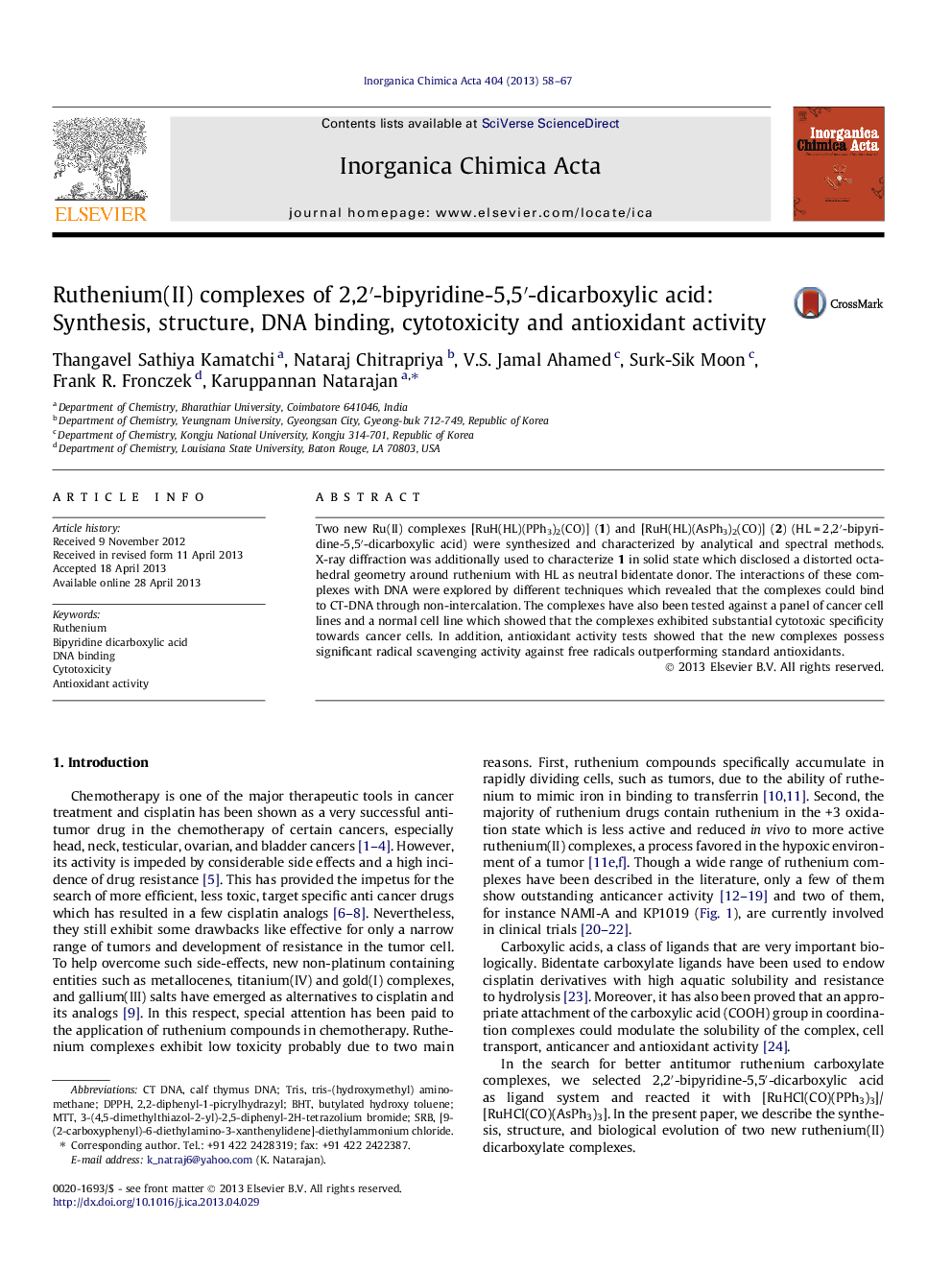| Article ID | Journal | Published Year | Pages | File Type |
|---|---|---|---|---|
| 1312303 | Inorganica Chimica Acta | 2013 | 10 Pages |
•Two new ruthenium(II) complexes have been synthesized and characterized.•The DNA interactions of these complexes were studied by a variety of techniques.•The cytotoxic activity was evaluated against a panel of cancer cell lines.•The complexes showed cytotoxic specificity towards cancer cells.•The antioxidant activity against various radicals have also been examined.
Two new Ru(II) complexes [RuH(HL)(PPh3)2(CO)] (1) and [RuH(HL)(AsPh3)2(CO)] (2) (HL = 2,2′-bipyridine-5,5′-dicarboxylic acid) were synthesized and characterized by analytical and spectral methods. X-ray diffraction was additionally used to characterize 1 in solid state which disclosed a distorted octahedral geometry around ruthenium with HL as neutral bidentate donor. The interactions of these complexes with DNA were explored by different techniques which revealed that the complexes could bind to CT-DNA through non-intercalation. The complexes have also been tested against a panel of cancer cell lines and a normal cell line which showed that the complexes exhibited substantial cytotoxic specificity towards cancer cells. In addition, antioxidant activity tests showed that the new complexes possess significant radical scavenging activity against free radicals outperforming standard antioxidants.
Graphical abstractThe two new ruthenium complexes comprising 2,2′-bipyridine-5,5′-dicarboxylic acid have been synthesized, characterized and subjected to various biological activities. They showed low DNA binding affinity, moderate cytotoxicity and significant antioxidant activity.Figure optionsDownload full-size imageDownload as PowerPoint slide
